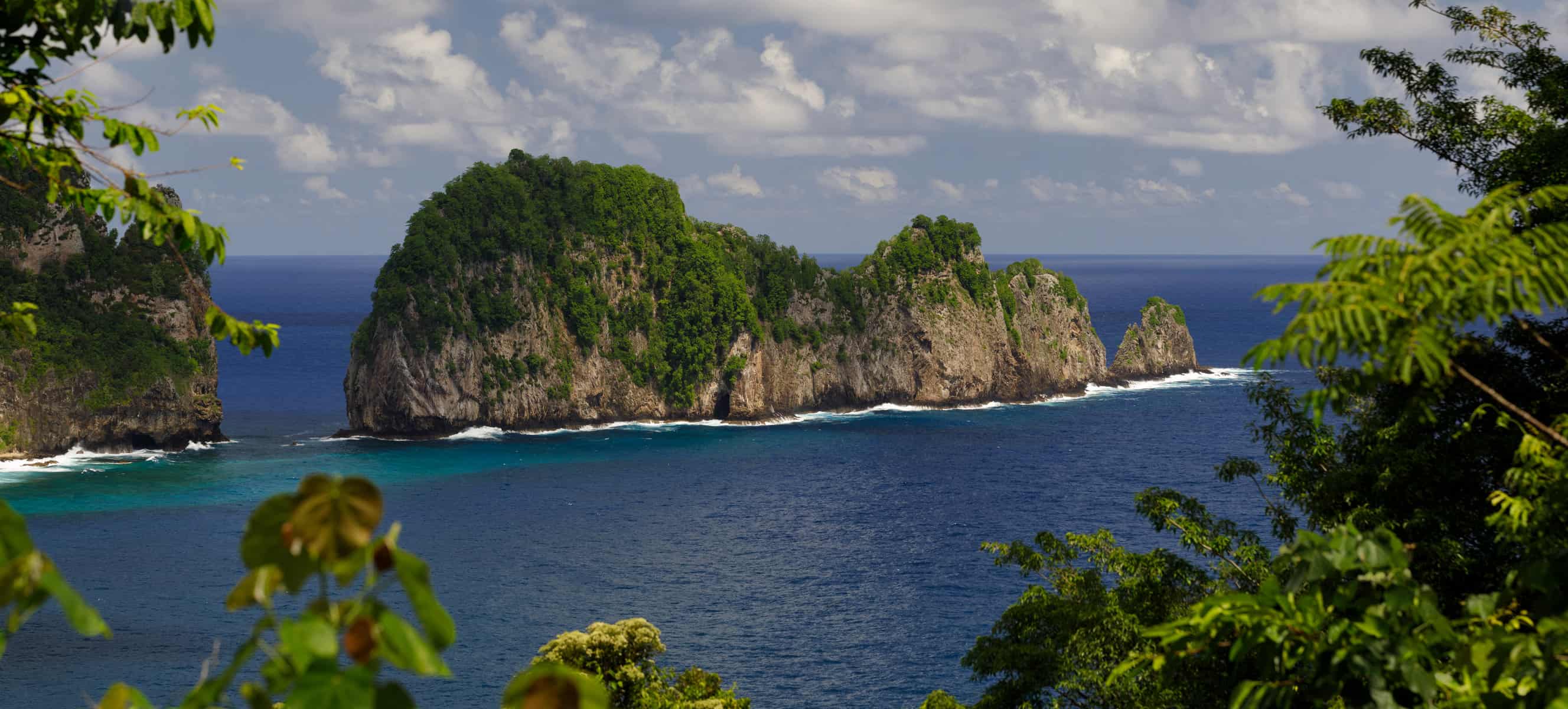American Samoa National Park is a remote and beautiful park located on the island of Tutuila and the smaller islands of Ofu and Ta‘ū in the South Pacific. It offers a unique blend of natural beauty and cultural history, making it a must-visit destination for travelers who are looking for an off-the-beaten-path adventure. In this guide, we’ll cover everything you need to know about visiting American Samoa National Park.
How to get to American Samoa National Park
The first thing to know about visiting American Samoa National Park is that it’s not the easiest park to get to. There are only two ways to get to American Samoa: by air or by sea.
Flights from The United States to American Samoa
All flights between the United States and American Samoa change planes in Honolulu. The leg of the journey between Honolulu and Pago Pago, the international airport in American Samoa, lasts around five-and-a-half hours.
For example, if you are flying from Las Angeles International Airport, you will have the 5.5 hour flight from LAX to Honolulu. Then, you will add whatever your layover time is, and you will proceed to add the 5.5 hour flight to Pago Pago.
If you are making this journey with children-in-tow, we highly suggest that you spend at least two nights in Hawaii on either end of your trip. This will make the lengthy flights more bearable, and it will help set up your trip for success.
Plus, Hawaii is awesome, and they have two can’t-miss national parks of their own! See our guide to Hawaii Volcanoes National Park or read more about both of Hawaii’s amazing, volcanic parks.
Do you need a car in American Samoa?
In order to traverse the main island of Tutuila, you will need to consider transportation. You can use a taxi services, rent a car, or use a bus.
The buses originate from the village outside of Pago Pago. It is a dollar or two, and you wave for pickup or dropoff locations around the island.
Where is the American Samoa Visitor Center?
The visitor center is in the city of Pago Pago. It is full of valuable educational exhibits that showcase the region and its culture.
How to get from Pago Pago, Tutuila to other Samoan Islands
The main international airport of American Samoa is located in Pago Pago which is on the island of Tutuila. This is the arrival airport for inbound flights from Honolulu. From there, you can take a short flight to the island of Ofu or Ta‘ū.
If you prefer to travel by sea, you can take a ferry from Pago Pago. The ferry will take you to Ofu or Ta‘ū. The ferry is operated by Samoa Shipping Corporation and takes approximately 3-4 hours.
Hiking in American Samoa National Park

One of the highlights of American Samoa National Park is the hiking trails that take you through the lush tropical rainforest and along the pristine coastline. The park offers a variety of trails for all skill levels, from easy walks to more challenging hikes. Here are some of the most popular hiking trails in the park:
- Ofu Beach Trail: This 4.8-mile round trip trail takes you through the rainforest to the beautiful Ofu Beach, which is considered one of the most beautiful beaches in the world.
- Lata Mountain Trail: This 2.2-mile round trip trail takes you to the top of Lata Mountain, which offers stunning views of the island of Ta‘ū.
- National Park Trail: This 1.5-mile round trip trail takes you through the rainforest to the National Park of American Samoa Visitor Center. Along the way, you’ll see a variety of native plants and animals.
Cultural Experiences in American Samoa National Park
American Samoa National Park is also a great place to learn about the rich culture and history of the Samoan people. Here are some of the cultural experiences you can have in the park:
- Samoan Village: The park has a traditional Samoan village that you can visit to learn about the history and culture of the Samoan people.
- Fagatele Bay National Marine Sanctuary: This marine sanctuary is home to a variety of marine life, including sea turtles and colorful fish. You can take a snorkeling tour to see the marine life up close.
- Samoan Culture Demonstration: The park offers a Samoan culture demonstration that includes traditional dance, music, and storytelling.
- Homestay: Yes, just like a college study abroad program, American Samoa offers homestays. (As of this writing, however, this program is paused.)
Practical Information for Visiting American Samoa National Park
- The best time to visit American Samoa National Park is from May to October, which is the dry season.
- There are no hotels or restaurants within the park, so be sure to bring plenty of food and water with you when you hike or enjoy the park features.
- The park is located in a tropical climate, so be sure to bring insect repellent and sunscreen.
- If you’re planning on camping in the park, you’ll need to obtain a permit from the National Park Service.
Park warnings and advice for visiting American Samoa
The National Park Service does have a series of warnings and advice for visitors to these islands.
- Watch for falling coconuts on the beaches.
- Always be aware of the tides.
- Ask a ranger about trail conditions.
- Be prepared with plenty of food and water.
- Beware of loose dogs as some are prone to aggression.
- Ensure that you have taken some time to learn and appreciate the local customs.
- Many services and offerings close on Sundays.
I do want to personally interject that physical resources on Samoan culture are hard to find. I am not currently able to find a guidebook to recommend to you; however, I do believe it is important to have a foundation for the culture. The National Park Service website for American Samoa National Park offers some essential tips to better understand the people and practices of this region. You may reference their section on the “Samoan Way” HERE.
Visiting American Samoa National Park is an adventure unlike any other. While it is a United States National Park, it is among the least visited. For a fantastic account of a national park experience on these islands, listen to THIS podcast. It is the best resource we have found!
